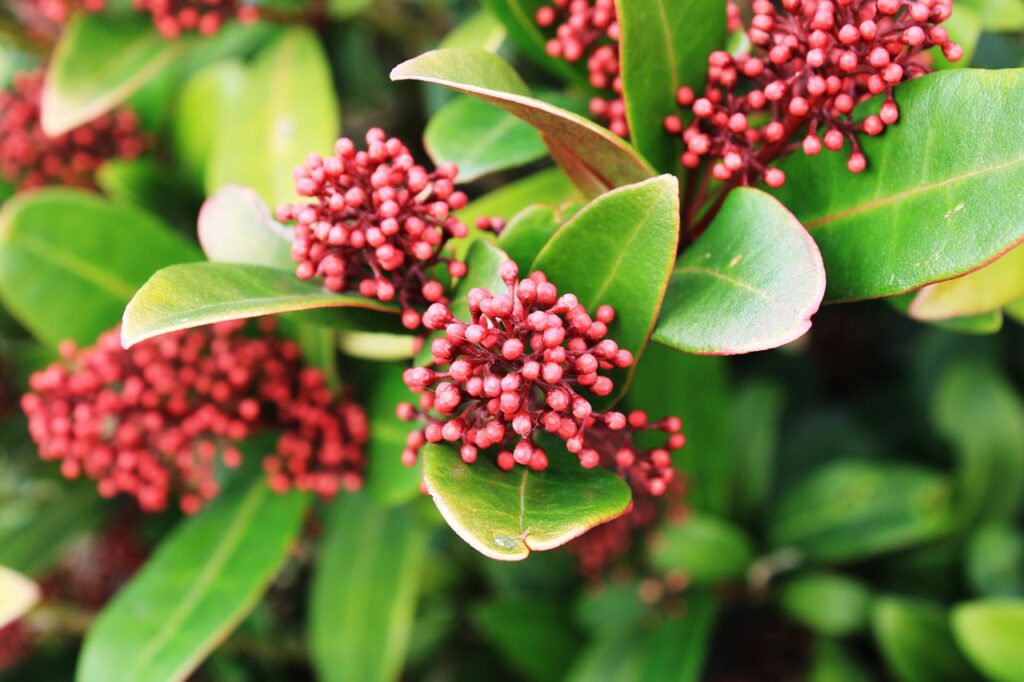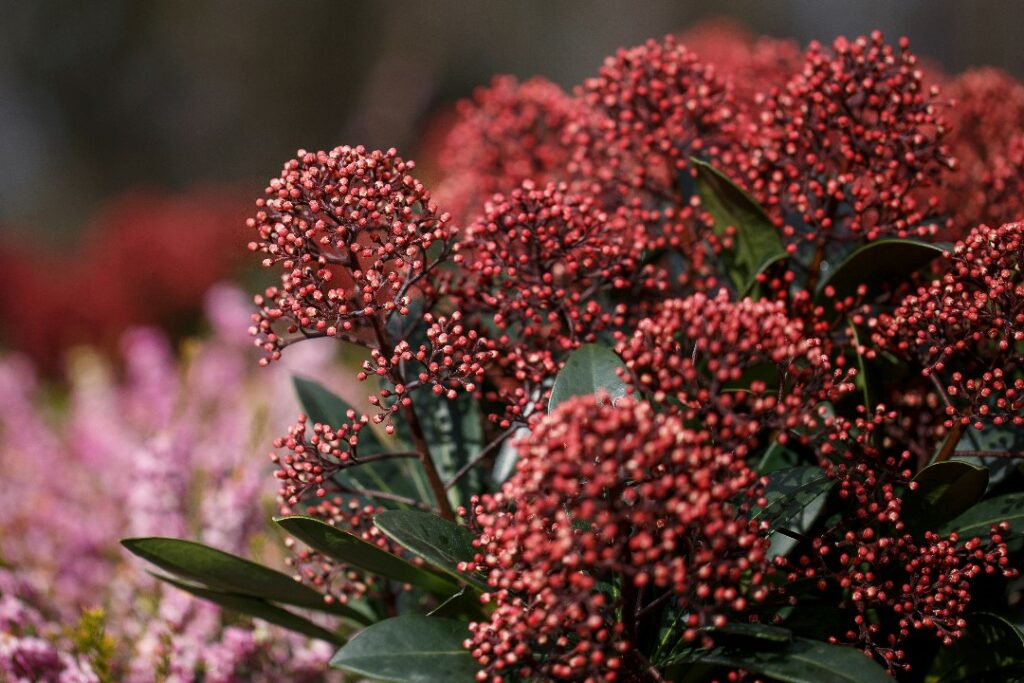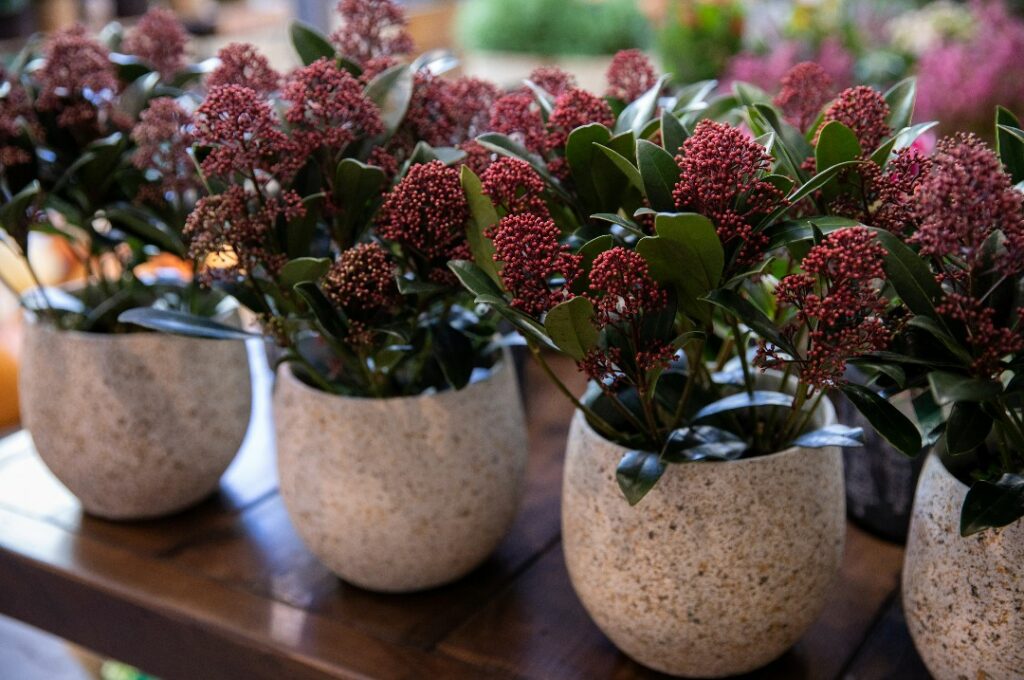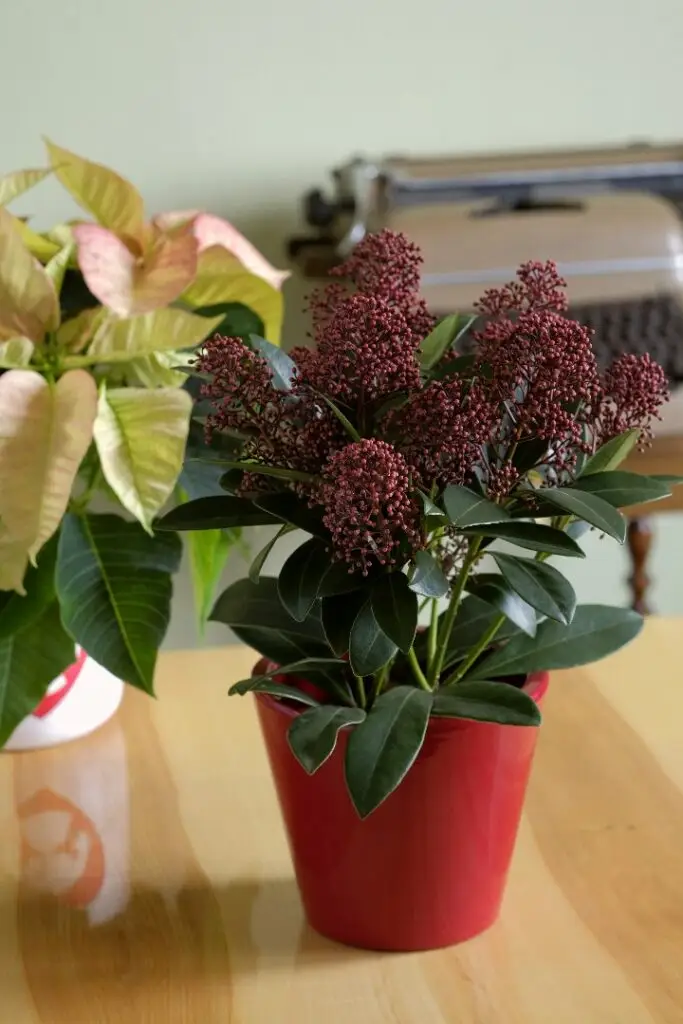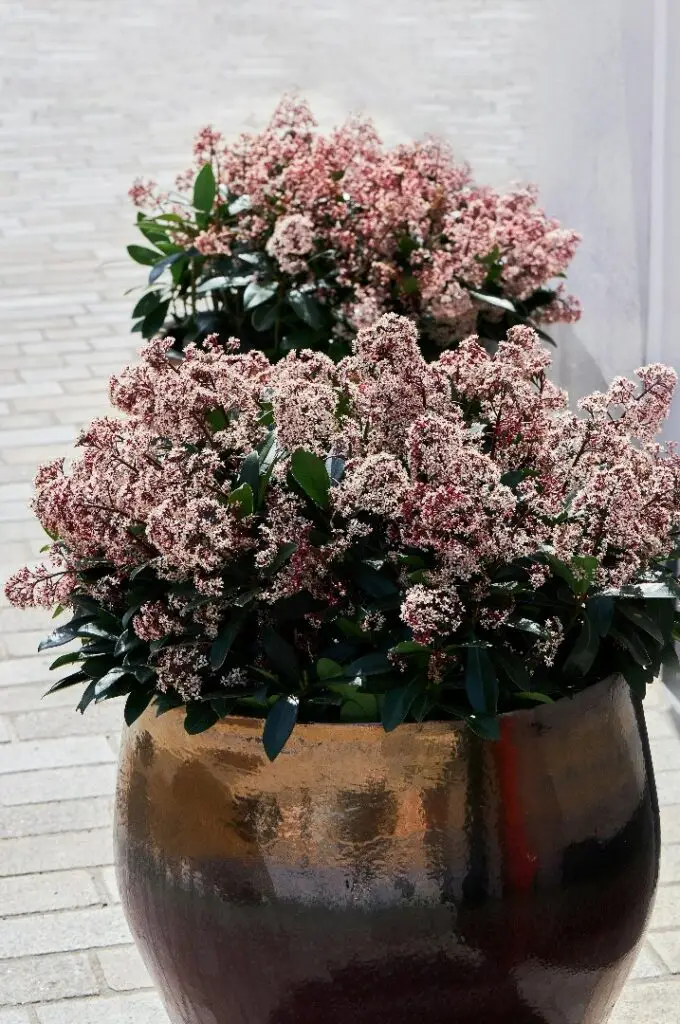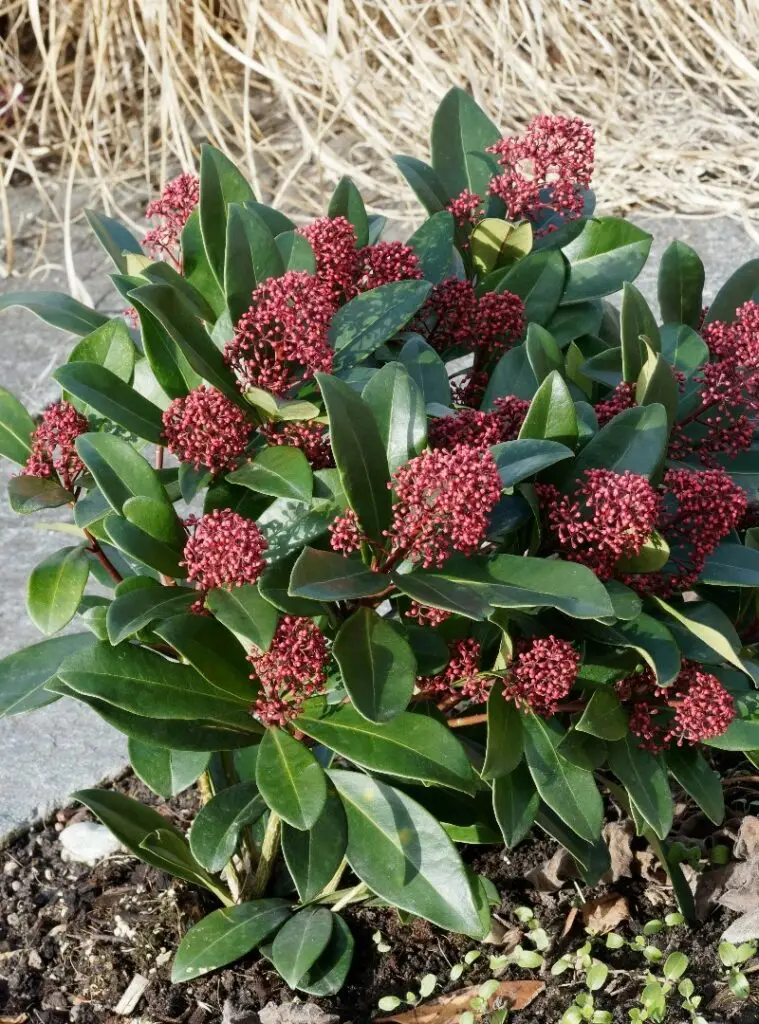Skimmia
| Name: Skimmia | Family: Rutaceae | Type Plant: Evergreen shrub |
| Flowering time: Spring (April to May), with red berries in autumn and winter (on female plants) | Best time to buy: Spring or autumn (ideal planting times) | Max Height: 1-1.5 meters |
| Sun/Shadow: Partial shade to full shade | Wintergreen: Yes, evergreen | Humidity: Prefers moderate humidity; well-drained, slightly acidic soil is ideal |
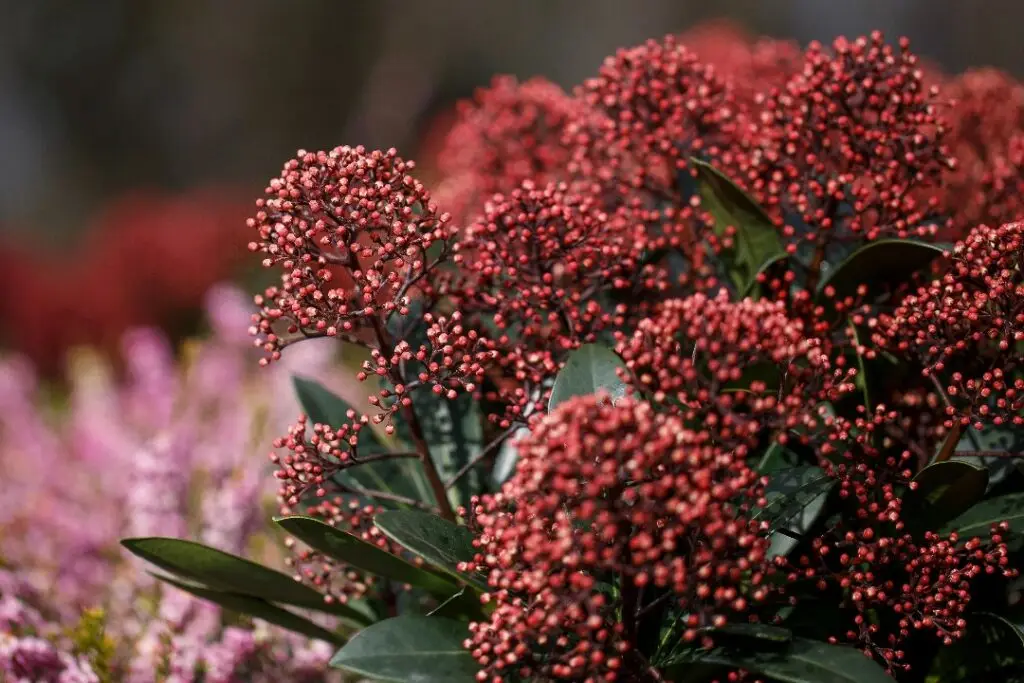
Origin
The Skimmia Japonica is a popular plant originating from the Rutaceae family, that comes from Japan. The Latin name of the plant is derived from the Japanese term for Skimmia, ‘Miyama Shikimi’. The Skimmia naturally grows in the woods of China and the Himalayan Mountains.
Characteristics
The Skimmia forms red flower bunches and berries for a long period of time, mostly from October until March. Not a surprise that the Skimmia is popular in the winter months to add some colours either in home or outside. Citrus trees are, just as the Skimmia, part of the Rutaceae family and the relationship between these two are noticeable. When the leaves of the Skimmia are contused, a citrus scent is released. These leathery, shiny leaves and the long blossoming flower bunches make the Skimmia a beloved interior addition. It is used for various purposes, such as element in flower arrangements or branches on their own in a small vase.
Care
A place in the shadow is preferred by the Skimmia, because the berries develop the best in that way. Keep your vase clean and give the Skimmia clean, room temperature water. Cut the stems obliquely with a sharp knife and get rid of excess leaves. There should be no leaves in the water, this can cause bacteria in the water. Also, to prevent bacterial infection, don’t put the Skimmia next to a fruit bowl. Fruit can give off a certain substance which is not good for the Skimmia. To be sure the plant is not exposed to too many bacteria, renew the water and clean the vase every five days and regularly fill the vase up. Add some flower food to it occasionally and keep the vase out of direct sunlight.
Blooming Time
In fall and winter, you will have the most profit of the Skimmia. The twinkling berries are very popular around Christmas times. Skimmia branches can give a bouquet a lot of ornamental value and they are also pretty on their own in a vase or in Oasis floral foam.
